My Diary – Your News. Daniela Comani: It Was Me
My Diary 1900–1999 in the Context of the 1956 Revolution in the Western World
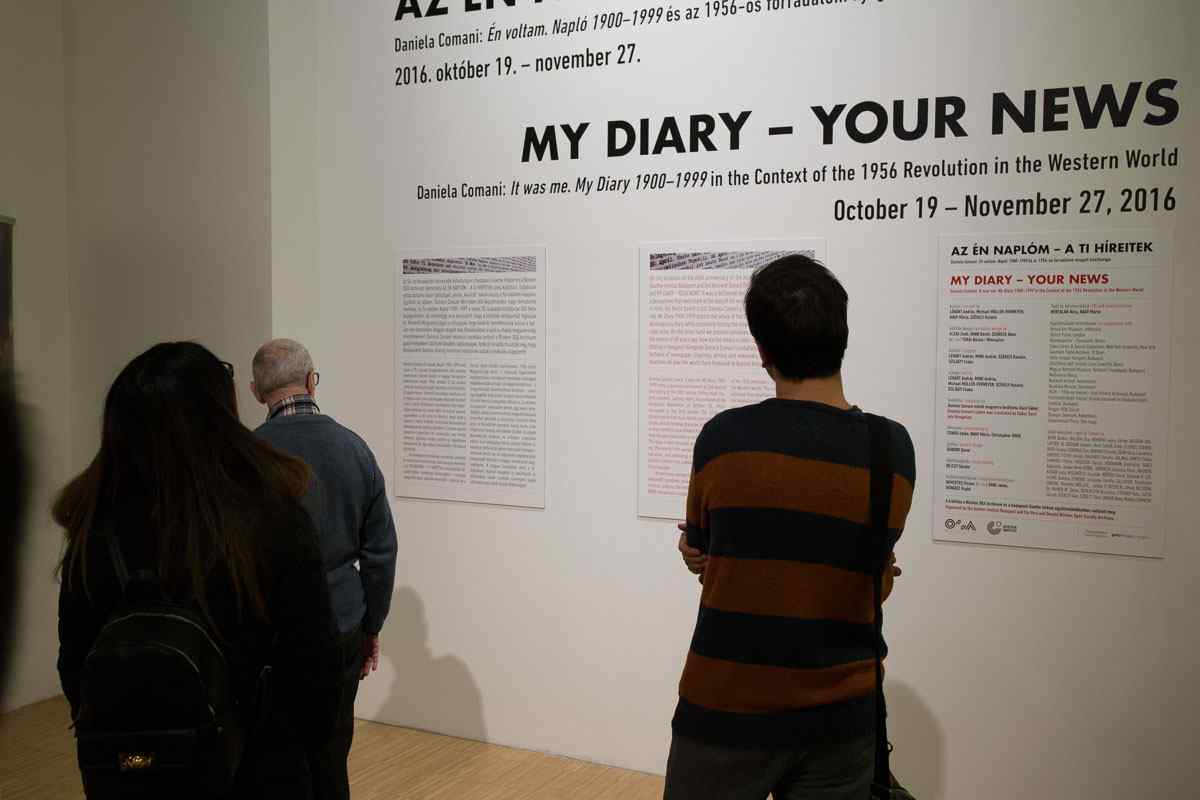

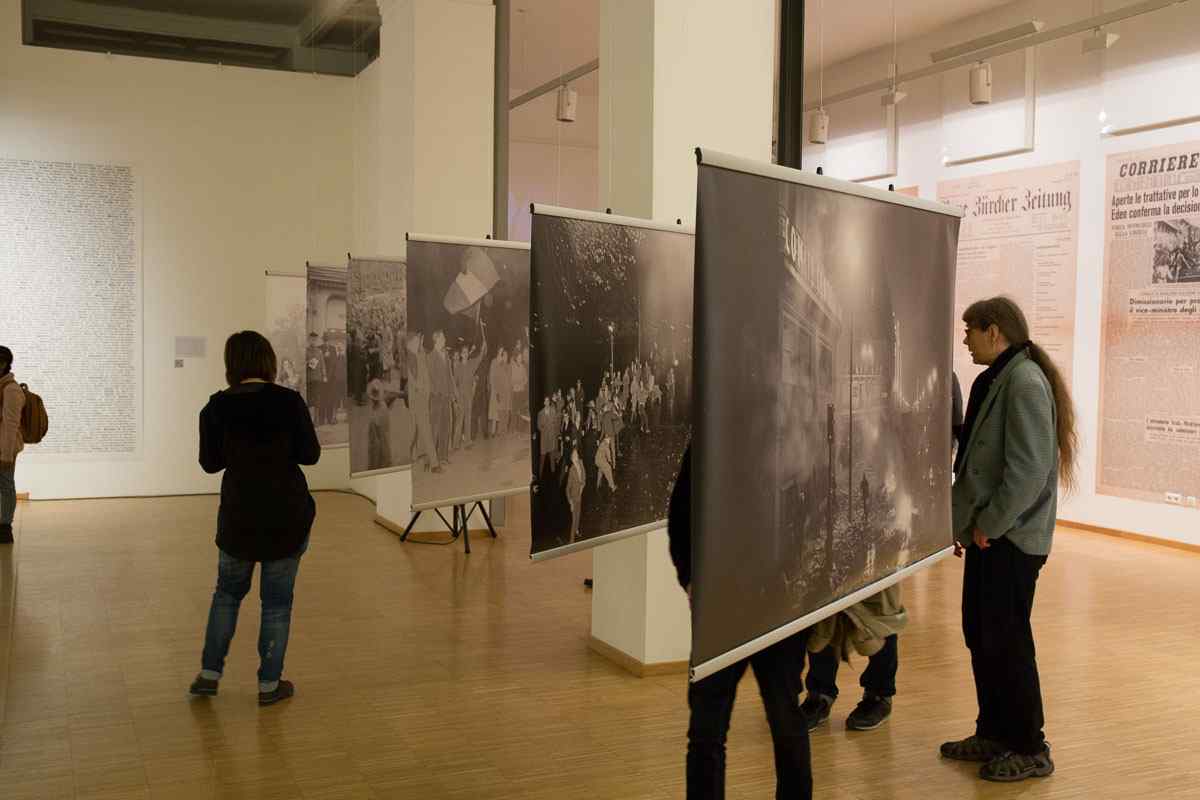
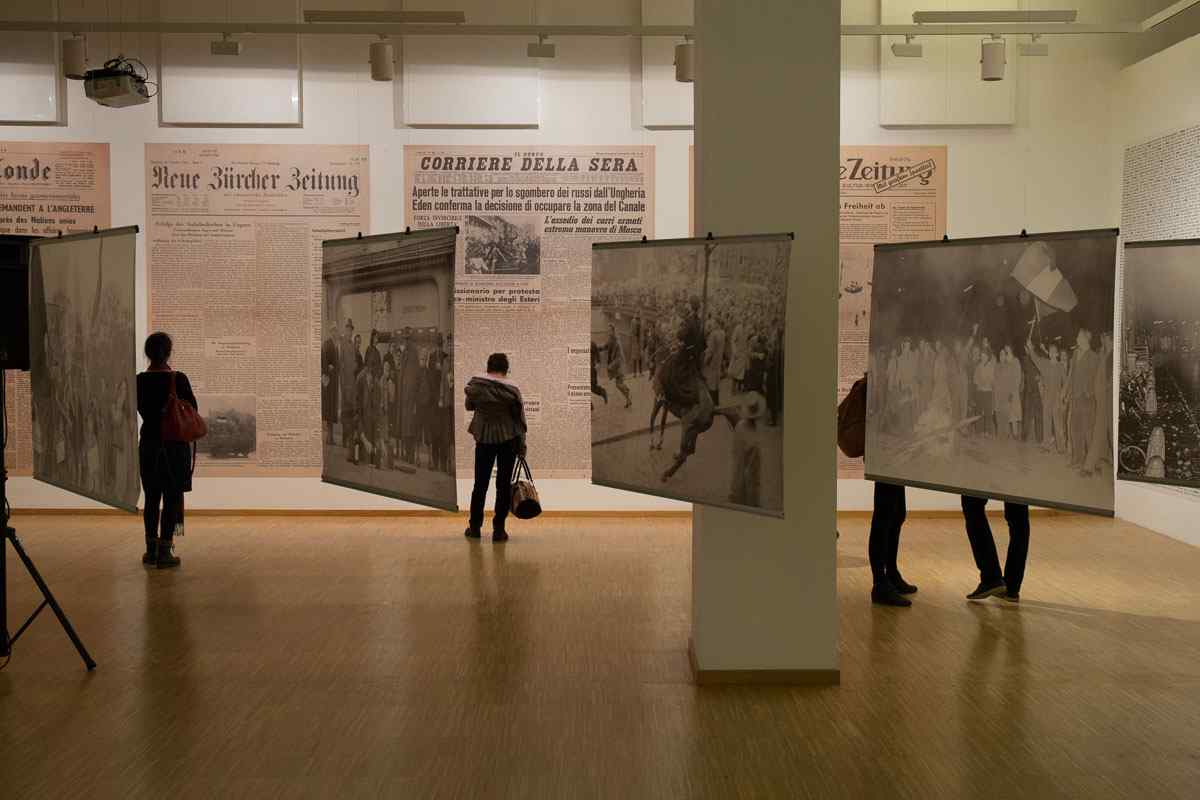
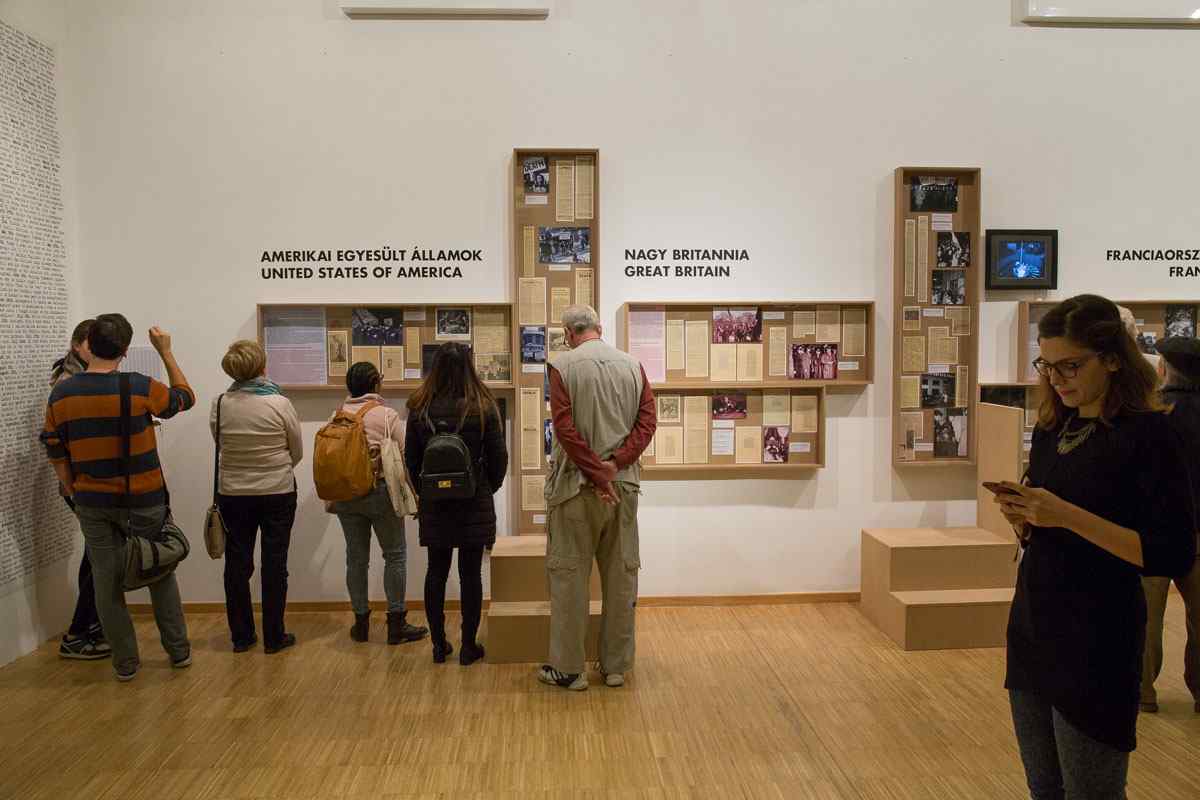
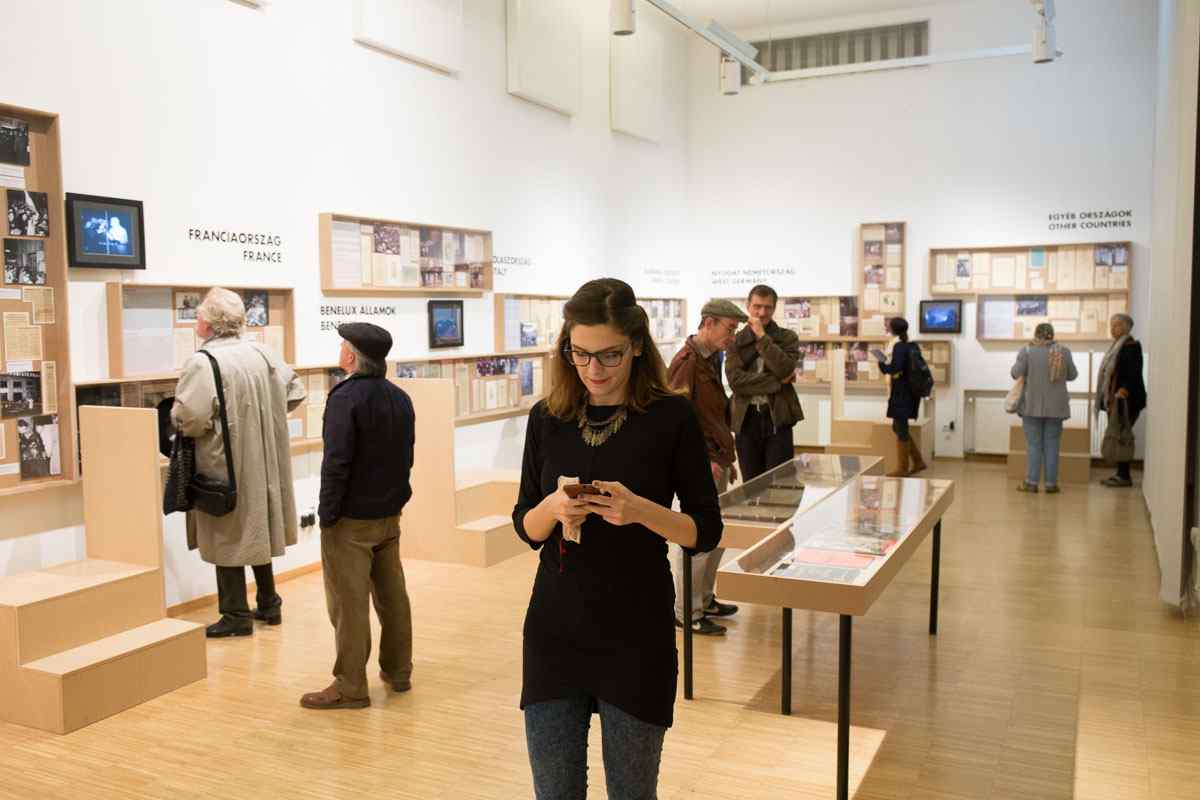
Daniela COMANI
Design: ALEXA Zsolt, RABB Donát, SCHRECK Ákos, TURAI Balázs / Minusplus
Goethe-Institut Budapest, OSZK 1956-os Intézet - Oral History Archívum
támogató partner / supporting partner: Getty Images Hungary
On the occasion of the 60th anniversary of the Hungarian Revolution of 1956, the Goethe-Institut Budapest, in cooperation with the Vera and Donald Blinken Open Society Archives, presents My Diary - Your News.
It was a deliberate decision to present the exhibition with a perspective that looks back at the days of the revolution from the outside. On one hand in time: the Berlin based Artist, Daniela Comani’s large size art installation entitled It was me. My Diary 1900–1999 depicts the whole of the 20th century through 365 entries of an imaginary diary, while constantly forcing the viewer to take the position of the principal actor. On the other hand we position ourselves outside Hungary to reflect upon the events of 60 years ago. How did the media in other capitals react to the events unfolding in Hungary? Alongside Daniela Comani’s installation, items from OSA’s own collections of newspaper clippings, photos and newsreels document the intensity of reactions all over the world, from Reykjavík to Buenos Aires.
Daniela Comani’s work, It was me. My Diary 1900–1999, narrates a personalized account of 356 days of the history of the 20th century, listing major historic moments, (among others, the outbreak of the Hungarian Revolution on October 23, 1956), recounted in the first person. The eschewed chronology and the diary format simultaneously give history an intimate, almost fictional character, while reminding us how different historical moments from the past continually re-surface in the present. This diary is both personal and universal, combining 356 events from world history into a single narrative, and spanning one year of a single person’s lifetime into a whole century of universal historiography.
By switching vantage points between personal and public narratives, between national and international contexts, the exhibition MY DIARY – YOUR NEWS, in a similar manner, reexamines a single national narrative – that of the 1956 revolution – from a new angle, through the reactions of the Western world. The international media concentrated their attention on Hungary: the events of the revolution truly transfixed the world. The Hungarian Uprising, along with the parallel Polish events, was welcomed by many not only as the first major threat to Soviet control in Central and Eastern Europe, but also as a “second October Revolution”, a chance to reinvent Communism after the failures of the Stalinist regimes. After the crush of the Revolution, the disappointment was immense. The heated debates over the Soviet invasion stirred strong emotions across the globe that lead to (sometimes violent) mass demonstrations, and widespread solidarity actions towards all those who fled the country. The Hungarian Revolution brought home the tension of the Cold War in the Western World, for many making the events happening in a foreign country a personal affair.
Organized by the Goethe-Institut Budapest and the Vera and Donald Blinken Open Society Archives.
Supported by Donald Blinken, former US Ambassador to Hungary, and his wife Vera Blinken.